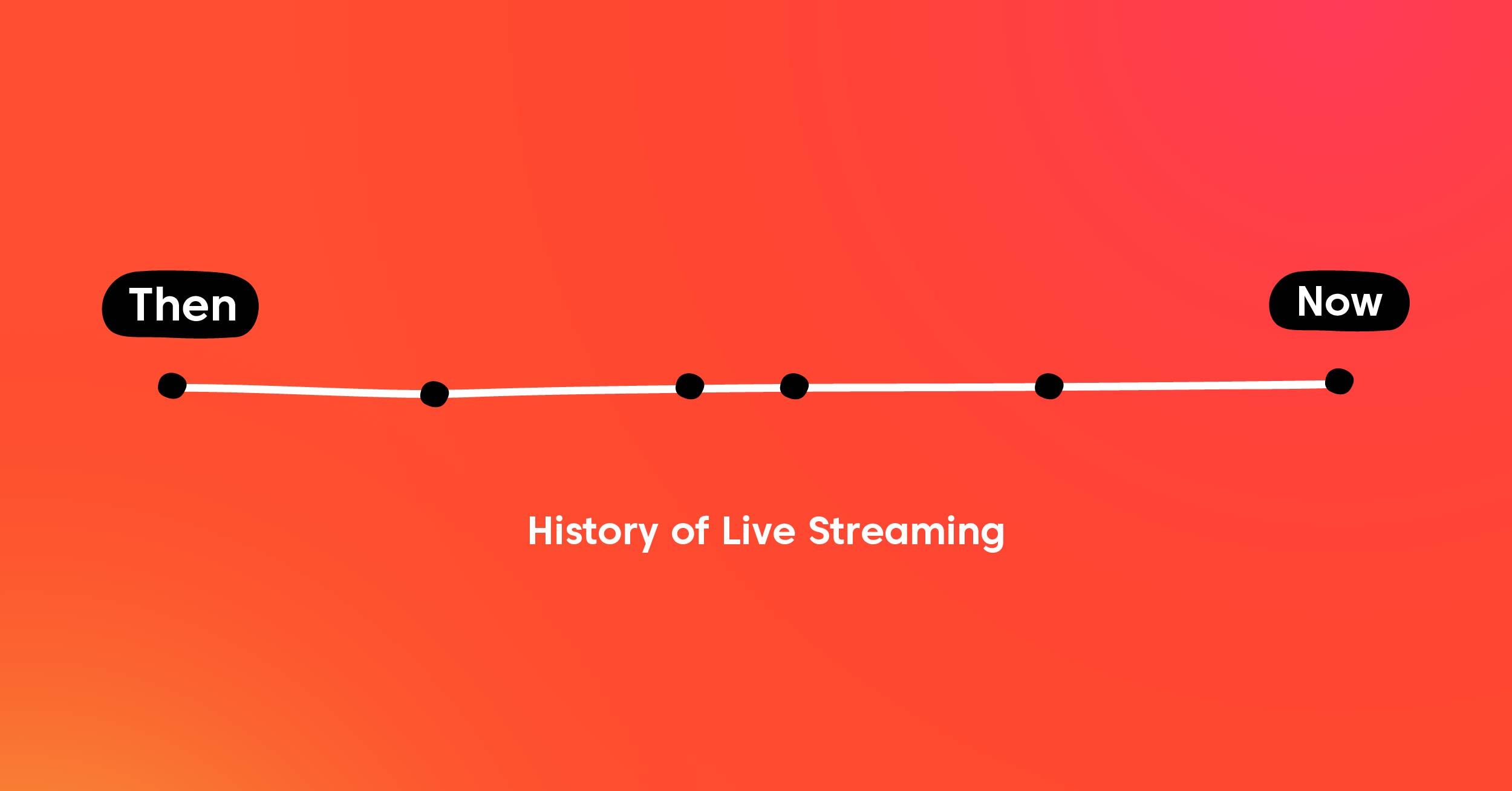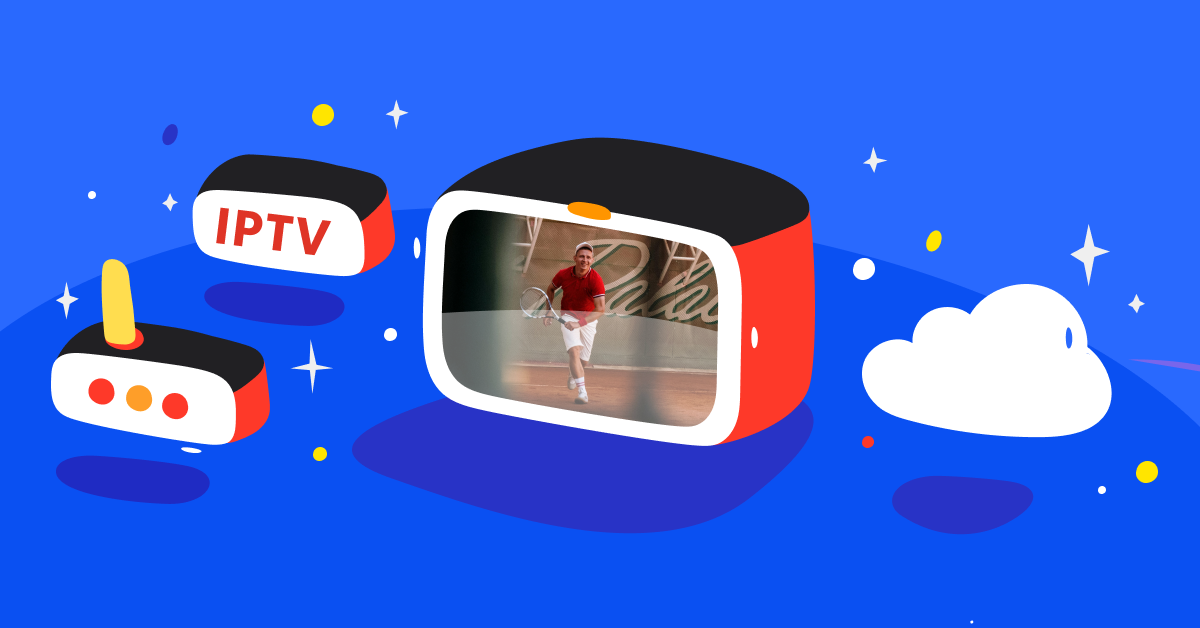Live streaming is all the rage these days. From watching your favorite music artist perform live to catching the biggest sports events in real time, live video streaming has become an integral part of our lives. But do you know that the concept of live streaming isn’t new? It has been around since the early 1990s!
In this blog post, we will take you through the history of live streaming. From its humble beginnings to the present day, we’ll explore how live streaming has evolved and grown over the years. So, let’s explore how various streaming services have played a crucial role in shaping the live-streaming industry.
The Early History of Live Streaming
The live-streaming industry has a fascinating history. Live streaming started in the early 1990s when the first media players capable of live streaming were developed. This new technology allowed computer users to watch audio and video content in real time, changing how we consume entertainment.
One of the first live-streamed events was a music concert, a big step for music streaming. A baseball game was also live-streamed using RealPlayer by RealNetworks, Inc. This was a big deal because it showed how live streaming could bring live sports to computer screens worldwide.
In 1999, a major milestone in live-streaming history occurred. U.S. President Bill Clinton was featured in one of the first webcasts. This event was broadcast from George Washington University and was made possible by technology from the Excite@Home Network.
The year 2005 was another big year for live streaming. The emergence of YouTube opened up new opportunities for streaming video. In 2008, YouTube Live hosted its first live-stream event. This was a game-changer because anyone with a computer and internet connection could watch live events from anywhere in the world.
In 2011, a platform called Twitch started live-streaming video games. This was a huge hit and showed that live streaming wasn’t just for traditional streaming media like music and sports. It could also be used for video games, a form of entertainment enjoyed by millions of people worldwide.
As the years went on, other social media platforms like Twitter, Facebook, and Instagram also introduced live-streaming capabilities. This made live streaming even more popular and widely used. Live streaming is used for many purposes, including communication, entertainment, and marketing strategies. It’s safe to say that the live-streaming industry has come a long way since its humble beginnings.
Live Streaming in The Modern Era
Live streaming has changed a lot over the years. From its humble beginnings to the golden age of streaming we see today, it’s been a journey full of new technology and innovation.
One of the biggest changes in the live streaming industry was the introduction of the Content Delivery Network (CDN). This new technology has transformed the way we stream content. It’s even common to use multiple CDNs at the same time now. This just goes to show how important these networks are for the streaming platforms we use every day.
Another big trend in live streaming is multistreaming. This means broadcasting the same live event on multiple platforms at the same time. Whether it’s a baseball game or a video game tournament, viewers can watch the live broadcast from their favorite platform. This could be Twitch Live, YouTube Live, Facebook Live, Amazon Prime Video, or any of the other platforms out there.
One of the biggest challenges in live streaming has always been latency – that annoying delay between the live video and what you see on your screen. But ultra low latency and sub-second latency technology has largely solved this problem. This makes the experience much better for the audience whether computer users or mobile users alike.
Prerecorded video is also becoming more popular in the world of live streaming. This allows content creators to record their videos in advance and then broadcast them as if they were live. This can be a big help for live streams that need a lot of preparation.
There are also lots of ways to make money from live streaming. Different monetization models have been developed to help content creators earn a living from their streams. This could be through ads, subscriptions, and even donations from viewers.
So, from its early days to the present, live streaming has come a long way. It’s a vital part of our internet culture and a major form of entertainment. Whether it’s music, video games, or television shows, live streaming lets us enjoy the content we love in a whole new way.
Future of Live Streaming
Live streaming is not just a fad but a growing industry. People watched 7.6 billion hours of live content across all platforms in the third quarter of 2023. This is backed up by predictions that the global live-streaming market will reach a staggering $252.76 billion by 2029.
The COVID-19 pandemic played a significant role in this growth. Between March and August 2020, live streaming saw an increase of 300%. That’s a massive jump in a very short time! That’s three times as much in just a few months!
So, it’s clear that live streaming is here to stay. It’s changing the way we watch video and listen to audio, and it’s opening up new opportunities for entertainment, education, and social connection. The future of live streaming looks bright and exciting!
Castr: Your Modern and Powerful Live Streaming Solution
Castr is a modern and powerful live streaming solution that can help you with all your streaming needs. It offers a variety of features that make streaming video a breeze. For example, with video hosting, you can store all your live streams in one place. This makes it easy to find and live stream your videos whenever you want. The multi-chat overlay feature allows you to chat with your viewers across multiple platforms at the same time. This means you can interact with your audience no matter where they’re watching from.
With the Multi CDN feature, your live streams will always be fast and reliable. This is because your video content is distributed across multiple computer networks to ensure smooth delivery. Castr’s Subsecond Latency feature ensures less than 1 second of delay between when you broadcast your live event and when your viewers see it. This makes your live streams feel more real and interactive.
Prerecorded live streaming allows you to broadcast a video as if it’s live, even if it’s not. This is great for times when you can’t be live but still want to engage with your audience.
Castr’s advanced paywall feature helps you make money from your streams. You can charge your viewers to watch your exclusive content. Finally, the adaptive bitrate feature adjusts the quality of your stream based on your viewers’ internet speed. This ensures that everyone gets the best viewing experience possible, regardless of their internet connection.
So why wait? Try Castr today and experience the new era of live video streaming!








